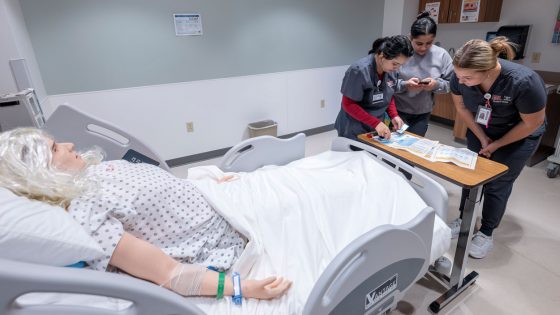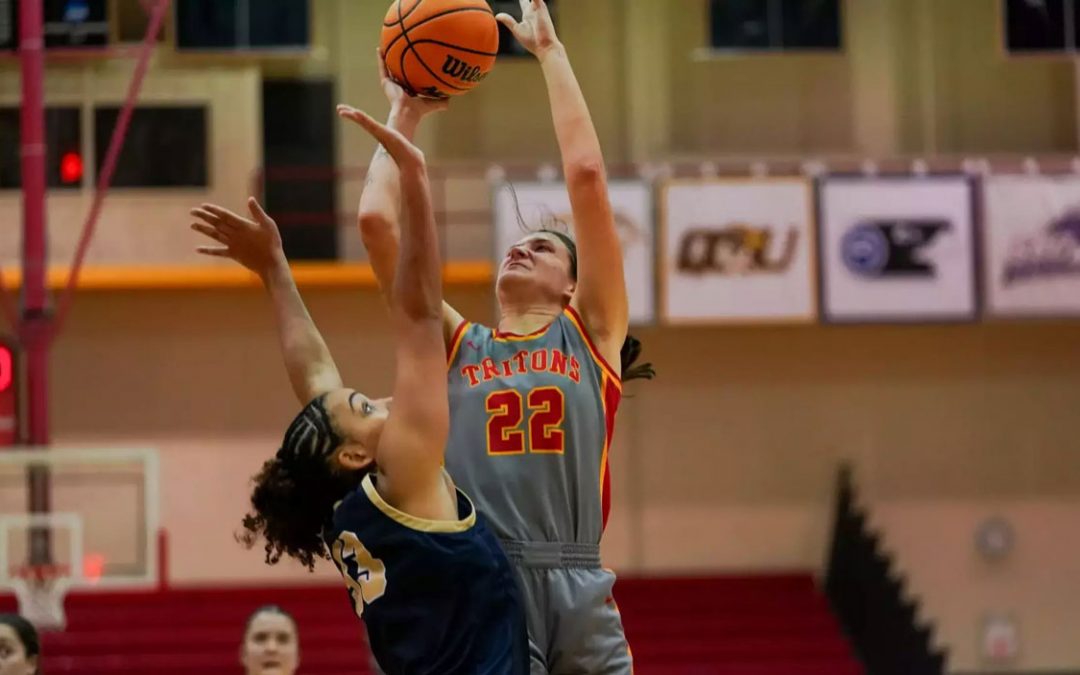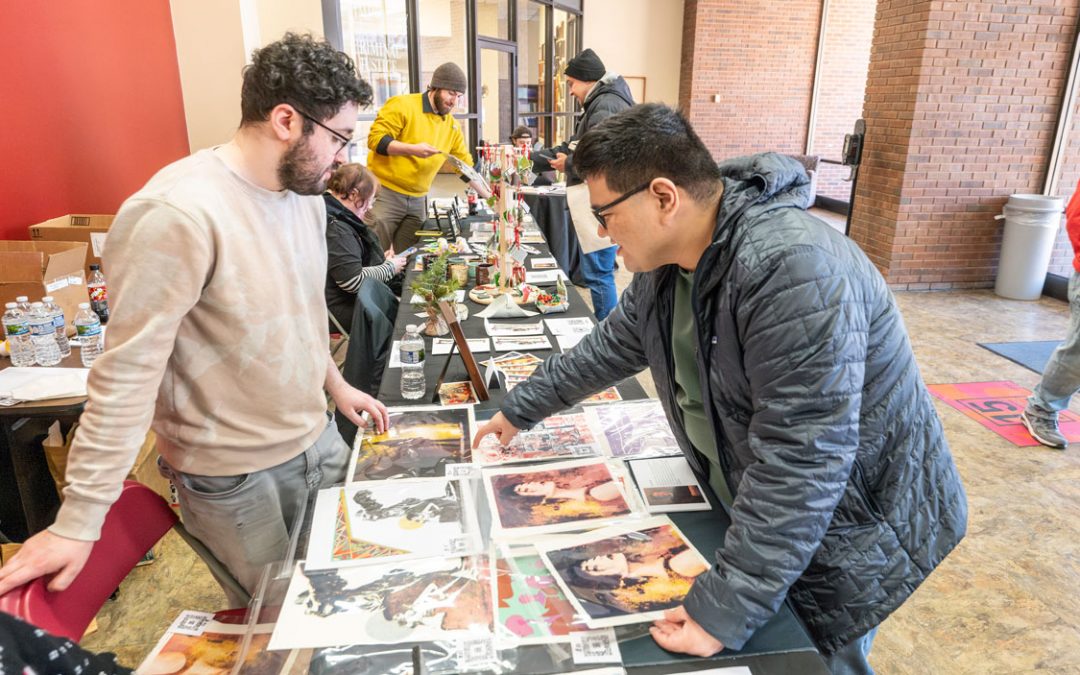
Senior BSN students Romaisa Hassan and Maddison Budd watch Saba Shaikh use a black light to find a fingerprint clue during an escape room challenge in the Nursing Simulation Center. (Photos by Derik Holtmann)
Slowly but surely, Maddison Budd, Romaisa Hassan and Saba Shaikh combed the simulation room looking for fingerprints. Using a black light, the students examined everything from the sink to the doorknob to the medical supply cart, and they eventually found nine Glo Germ fingerprints on five different high-touch surfaces in the room.
Once they located those fingerprints, they used the information they collected to unlock a 4-digit code on a Foley catheter bag, which led them to their next puzzle on hand hygiene. All the while, the clock was ticking.
Budd, Hassan and Shaikh were just three of nearly 50 students in the BSN program at the University of Missouri–St. Louis to participate in the university’s first-ever escape room simulation: “Escape from the Deadly Pathogen” on Nov. 13 and 14. The simulation transforms infection prevention training into an interactive, game-based simulation where students work through clues and challenges related to infection control practices.
Elizabeth Gavin, director of UMSL’s Simulation Lab, and Jinnie Tkach, an assistant teaching professor and simulation coordinator in the College of Nursing, hosted the simulation using a model created by Virginia Commonwealth University’s Virginia Infection Prevention Training Center.
Working together in small groups in UMSL’s state-of-the-art Nursing Simulation Lab, students completed a series of puzzles all focused on infection prevention topics, including hand hygiene, wearing personal protective equipment and how different disinfectants work against different organisms. Gavin, Tkach and other nursing faculty moderated the simulation, which took about 45 minutes for students to complete, providing clues as needed. Some groups were able to escape the room successfully while others weren’t, but they all left the experience having learned important lessons about the importance of patient education and cleanliness.
Gavin said it’s vital for students to learn about infection control practices because those very practices prevent patients from ending up back in the hospital. “Depending on what the bacteria or fungus or virus is, you might take different precautions,” she said. “So it’s really important that they get in the habit of standard precautions, while also being aware of what they’re working with because it varies. It might change what they wear when they go in the room, if they wash their hands versus using alcohol foam, that kind of thing. It’s super important throughout their whole nursing career.”

During the simulation on Nov. 13 and 14, students completed a series of puzzles all focused on infection prevention topics.
Tkach adds that the simulation was also designed to help students prevent infection spread between multiple patients they might be taking care of in a given day. “Any type of spread can happen, so they have to be really cognizant of spreading to other patients or their coworkers,” she said. “They have to know more than just what’s standard.”
From infection prevention to interprofessional events with students in the College of Optometry, the College of Nursing team is continuing to offer innovative new simulation experiences for students to make learning engaging and immersive. Gavin feels simulations are such a powerful learning tool because they give students crucial hands-on experience.
“They can read all this stuff in a book, but to be able to apply it hands-on, to have those psycho-motor skills with it, I think it helps to bridge the gap between theory and actually doing it,” she said. “You can read about it in a book, but it’s not the same until you do those things with your own hands. It gives them that opportunity to be like, ‘Okay, I read about this, but now I can do it, and I can do it with the simulator rather than a real person, where if I make a mistake, it might have different outcomes.’”














